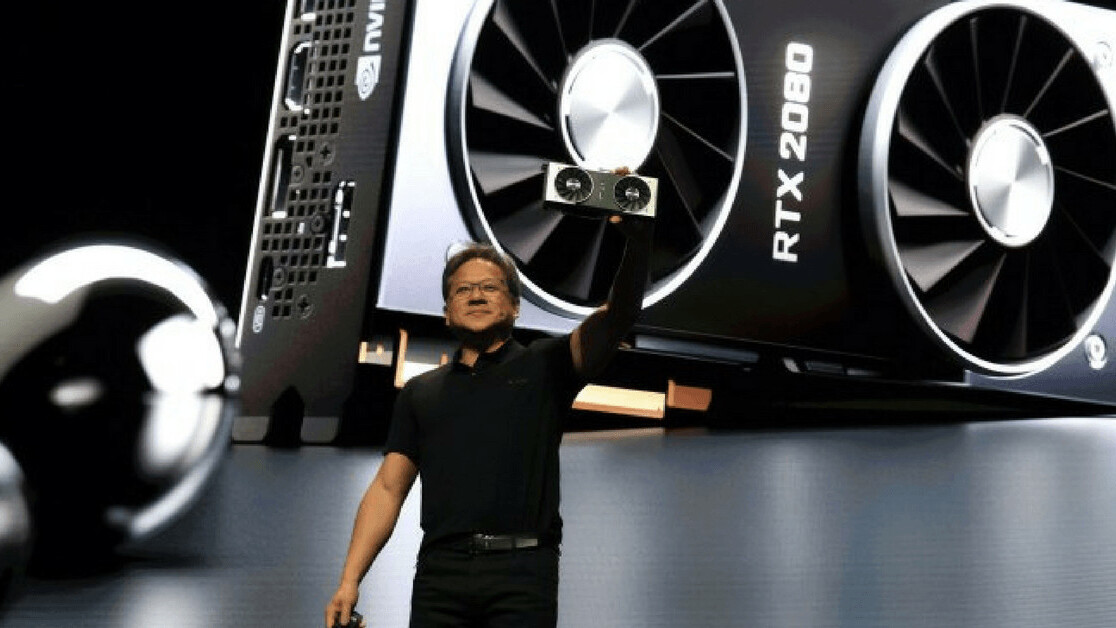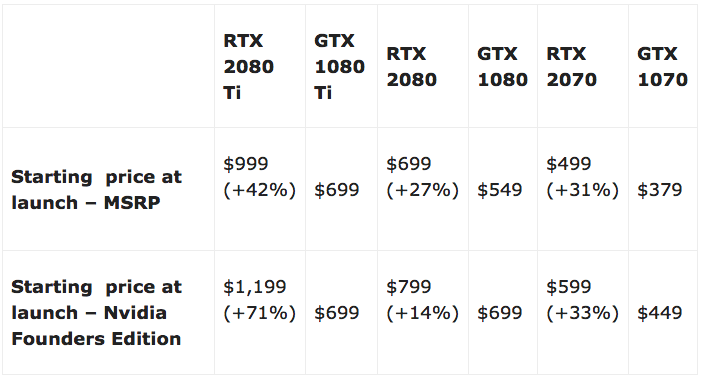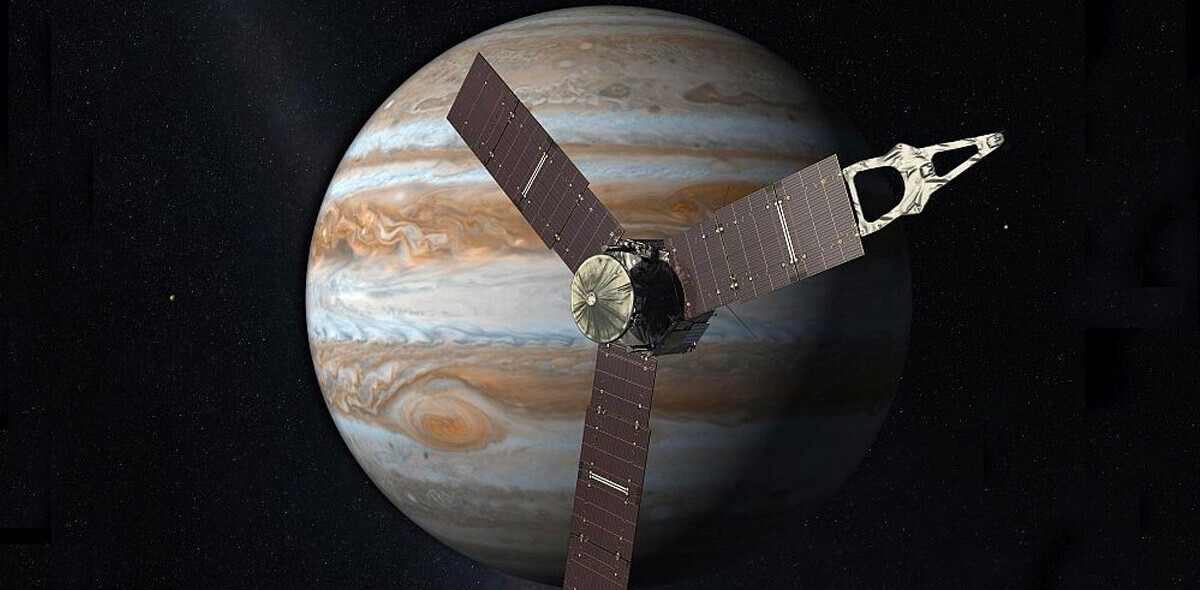
On Monday, Nvidia CEO Jensen Huang introduced his company’s latest line of graphics cards aimed at gamers and the consumer market. In a special event that took off in Cologne, Germany, on the eve of Gamescom, Jensen showed the green team’s next generation GPUs, the GeForce RTX 20 line.
Jensen’s presentation was mostly about Nvidia’s new real-time ray tracing technology, the “holy grail” of computer graphics as many refer to it. He showed some great examples of what can be achieved in terms of photorealistic results in real-time, something that has been solely in the realm of animation studios and offline rendering until this very day.
As of now, Battlefield V by EA DICE is one of the few games that will put Nvidia’s new RTX technology to use.
In terms of quality, there is no doubt that Nvidia is on the right track with its new Turing architecture, which was first shown in the professional Quadro line at SIGGRAPH. But when it comes to gaming cards aimed at consumers, there might be a catch.
Not every standard and technology becomes mainstream
First of all, the Geforce RTX 20 series is new technology and the short history of computers has a lot of well-intended innovations that swiftly ended up in the digital graveyard.
Take Nvidia’s Maxwell or Pascal graphics cards. If you bought any of those video cards hoping that DX12 and Vulkan would be the future of gaming, you probably didn’t feel vindicated as far as those specific features are concerned.
In 2013, something similar happened to AMD’s Mantle, the graphics API that was touted to “transform the world of game development to help bring better, faster games to the PC.” It didn’t conquer the gaming industry and was put down in favor of other APIs before many gaming titles reached consumers.
Understanding the fundamental difference of the gaming industry
But that’s not all, even if the technology takes root, there is still much time before the gaming industry produces enough titles to justify the purchase, and by that time, your GeForce RTX 2080 may already be outdated.
The blame is not on Nvidia, or any particular player. It’s rather a direct outcome of how the gaming economy works. Unlike animation studios, which merely need to ship an end product that can be watched by everyone with a working human eye and a possible video player if need be, game developers and players are technologically dependent on each other.
This means that for developer studios to benefit from their investment in a new technology, their consumer community has to be able to access it. And vice-versa.
The costs of new technology
And access to new technology is costly. Comparing MSRPs, Nvidia’s latest GeForce RTX 20 series is a “mere” 27-42 percent more expensive than its corresponding GTX 10 series cards. For the Founders Edition, the prices are up 14-71 percent.

Even a new 2018 video card for the same price as a 2016 card should give you some performance improvements, regardless of the price increase.
For instance, the GTX 1080 compared to the GTX 980 had an approximate 50-percent performance increase when benchmarked for popular games like Crysis 3, BioShock Infinite, and Tomb Raider, while the price increase at launch was less than 10 percent.
When Jensen, in his presentation, didn’t give any direct comparison between Nvidia’s GTX and RTX series, tech savvy consumers and experts became concerned about the overall performance increase. Jensen actually introduced a new benchmark focusing on how the RTX technology outperforms GTX in terms of giga rays traced per second six times over.
As for a classic comparison, we stayed in the dark.

Later on, in an attempt to diffuse the confusion gamers were facing, Nvidia published a comparison between GeForce RTX 2080 and GeForce GTX 1080 claiming a 50-percent increase in performance and created more controversy, confusion, and suspicion along the way.
The most important question: What is the real price-performance ratio?
Here’s the catch: The RTX 2080 with a price point of $699 is more comparable to the launch price of GTX 1080 Ti. Considering that the GTX 1080 Ti is on average 1.27 times faster than the GTX 1080, we would have a 1.23 performance increase when comparing the GTX 1080 Ti and RTX 2080 with the same price at launch.
Now if you think about the deals you can get for new GTX 1080 Ti cards for around $600, the actual performance increase of 1.27 for current games fades away when looking at the 16-percent price increase.
And people on Reddit, Twitter and Nvidia’s own blog were fast to highlight it.
But there is also the promise of performance gains by implementing the new architecture’s innovative technologies like DLSS (Deep Learning Super Sampling). According to Nvidia’s benchmarks, games like EPIC Infiltrator, Final Fantasy XV, and PUBG that have implemented DLSS have achieved an additional performance increase between 25 to more than 50 percent.
Considering the pace of advancement, cutting edge technology is more comparable to fresh food than an investment in a new car. You should be able to take full advantage of the video card you pay for right away and not wait for it to give fruit next year.
Every day waited for new titles that implement your card’s technology boost is a day of wasted value. Right now the games that have already implemented the new APIs are few. It’s as simple as that.
In conclusion, I would like to note that my opinion is preliminary and based on publicly available data. Nvidia’s new GeForce RTX series hasn’t been tested by third parties yet.
For the time being, I recommend to hold off, unless you are a hardcore gamer or a technology diehard who doesn’t care much about how much performance improvement you get for the added price.
Due to falling cryptocurrency prices and the rise of ASIC processors, miner interest in GPUs is increasingly fading, helping GPU prices to normalize. Let’s wait a little more to see some independent RTX 20 benchmarks that compare apples to apples before deciding for or against a purchase.
Let us also hope that in a not-so-distant future, there will be more competition by the likes of AMD and Intel for cutting edge video cards. Unthroning the green team will surely help to stop or even reverse the annoying trend of increasing MSRPs in recent history.
This story is republished from TechTalks, the blog that explores how technology is solving problems… and creating new ones. Like them on Facebook here and follow them down here:
Get the TNW newsletter
Get the most important tech news in your inbox each week.




